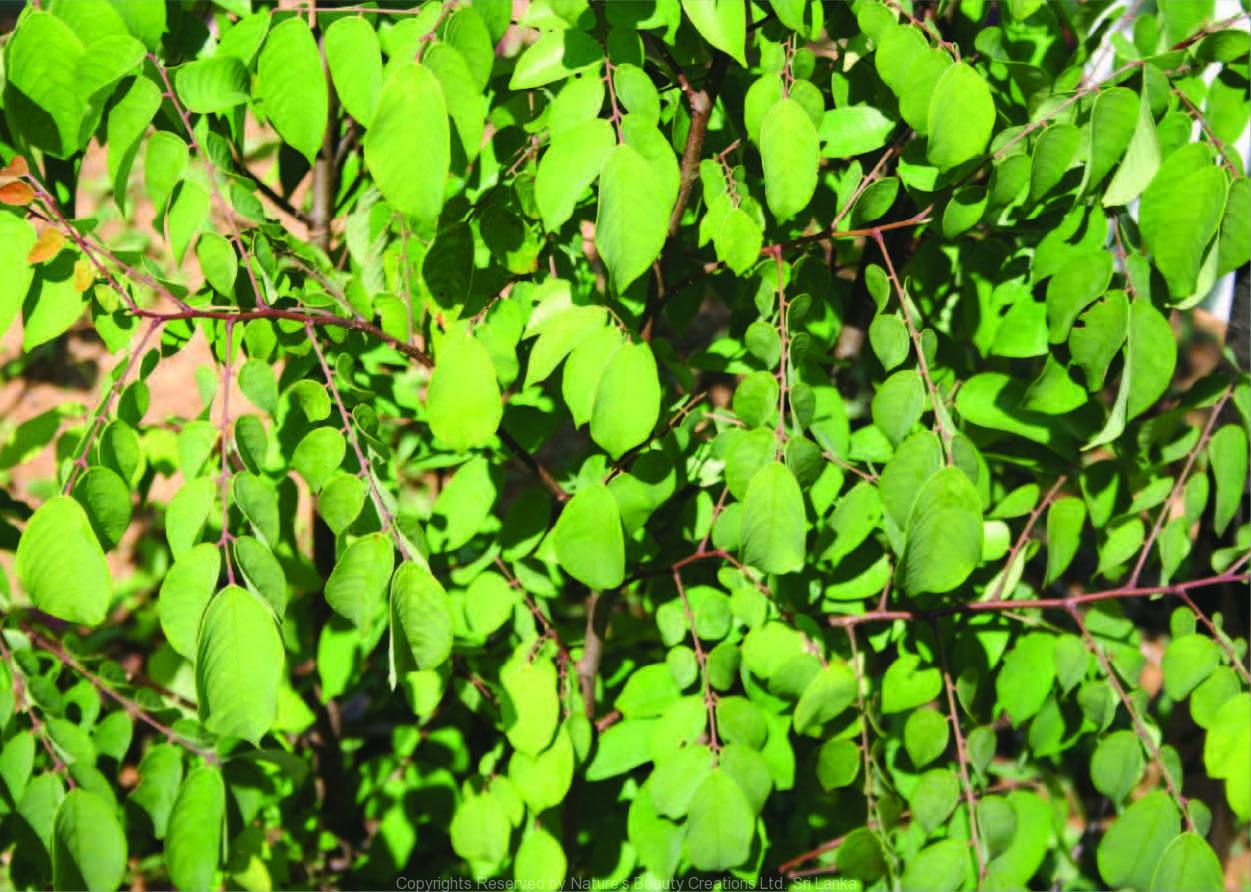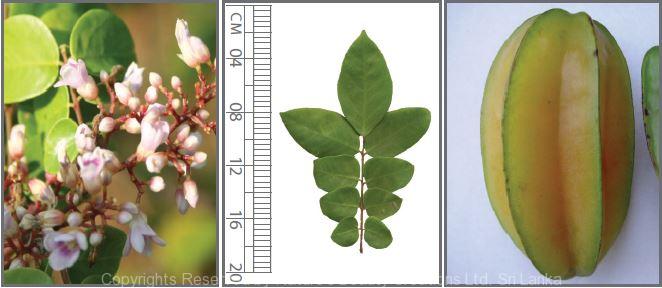

Traditional Knowledge
Useful plant parts :
Fruit
Uses in traditional medicine :
- Ripe fruit is eaten for haemorrhoids
- Acts as a laxative, antiscorbutic, sialogogue and an antiphlogistic
- Used to arrest vomiting, asthma, colic, jaundice and skin diseases
Scientific Research
Chemical constituents:
Alkyl phenols and benzoquinones: 5-O-methylembelin and its derivatives from wood; 5-hydroxymethyl-2-furfural and volatile constituents from fruits; phenolic and lignan glycosides from roots
Bioactivity :
Aqueous extract of fruits: hepatoprotective, hypoten- sive; ethanol extracts of leaves: anti-inflammatory; fibre-rich fraction of fruit: hypoglycaemic
Clinical:
Note :
Fruits are edible
Caution : Reports of neurotoxicity in uraemic patients
References : Azeem, A. K. et al., (2011), Hepatoprotective effect of Averrhoa carambola fruit extract on carbon-tetrachloride induced hepatotoxicity in mice, Asian pacific journal of tropical medicine, 1(8), 610-613. Cabrini, D. A. et al., (2010), Analysis of the Potential Topical Anti-Inflammatory Activity of Averrhoa carambola L. in Mice, Evidence- Based Complementary and Alternative Medicine, 1, 1-7. Chakthong, S. et al., (2010), Alkyl phenols from the wood of Averrhoa carambola, Chinese Chemical Letters, 21, 1094-1096. Chau, C. F. et al., (2004), Insoluble fiber-rich fractions derived from Averrhoa carambola: hypoglycemic effects determined by in vitro methods, Food Science and Technology, 37(3), 331-335. Gross, J. et al., (1983), Carotenoids of the fruit of Averrhoa carambola, Photochemistry, 22(6), 1479-1481. Mia, M. M. et al., (2007), Phytochemical and Biological Studies of Averrhoa carambola, The Dhaka University Journal of Pharmaceutical Sciences, 6(2), 125-128. Soncini, R. et al., (2011), Hypotensive effect of aqueous extract of Averrhoa carambola L. (Oxalidaceae) in rats: an in vivo and in vitro approach, J Ethnopharmacol, 133(2), 353-7. Tse, K. C. et al., (2003), Star fruit intoxication in uraemic patients: case series and review of the literature, Internal Medicine Journal, 33, 314-316. Wen, Q. et al., (2012), Phenolic and lignan glycosides from the butanol extract of Averrhoa carambola L. root, Molecules, 17(10), 12330-40. Wilson, C. W. et al., (1985), Volatile Constituents of Carambola (Averrhoa carambola L.), Journal of Agricultural and Food Chemistry, 33(2), 199-204.
Copyrights Reserved By
Natures Beauty Creations



